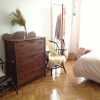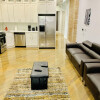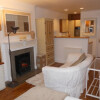1 Apartment For rent in district / neighbourhood Yorkville in New York
Living in the district / neighbourhood Yorkville in New York
About the district / neighbourhood Yorkville in New York
Yorkville, located on the Upper East Side of Manhattan, is a historically rich and vibrant neighborhood. Bounded by 79th Street to 96th Street, and stretching from the East River to Third Avenue, it has evolved from a quiet immigrant enclave into a lively and desirable residential area. Its unique mix of old-world charm and modern amenities makes it a fascinating part of New York City. History of Yorkville
Yorkville’s history dates back to the early 19th century when it was primarily farmland. The construction of the New York and Harlem Railroad in the 1830s spurred development, and by the late 19th century, the neighborhood had become a haven for immigrants, particularly Germans, Hungarians, Czechs, Irish, and Slovaks. German immigrants, in particular, had a significant influence on the neighborhood, and for much of the 19th and early 20th centuries, Yorkville was known for its German bakeries, beer gardens, and cultural institutions.
Yorkville’s immigrant past is still reflected in the architecture, churches, and community landmarks scattered throughout the neighborhood. Over time, Yorkville has seen significant gentrification and is now a blend of old and new, with modern high-rise buildings sitting alongside historic brownstones and tenement houses. Landmarks and Points of Interest
Carl Schurz Park: One of Yorkville’s most beloved landmarks, Carl Schurz Park is located along the East River, offering beautiful views of the river and Roosevelt Island. The park is home to winding paths, gardens, playgrounds, and dog runs, making it a popular spot for families and locals. At the park’s northern end, you’ll find Gracie Mansion, the official residence of the Mayor of New York City. Built in 1799, Gracie Mansion is a Federal-style home that was converted into the mayor’s residence in 1942. The mansion hosts public tours, offering visitors a glimpse of New York City’s political history.
The Church of St. Ignatius Loyola: Located on Park Avenue and 84th Street, the Church of St. Ignatius Loyola is an architectural and cultural gem. Built in 1898, the church is known for its stunning Baroque-style design, intricate interior details, and towering spires. It serves as both a religious center and a landmark for the local Catholic community. The church is also famous for its connection to the Jesuit-run Regis High School, one of the city’s top private schools.
The Bohemian National Hall: Reflecting Yorkville’s Eastern European heritage, the Bohemian National Hall, located on East 73rd Street, is a cultural institution that was originally built in 1896 to serve as a meeting place for Czech and Slovak immigrants. Today, it hosts a variety of cultural and educational events, including concerts, film screenings, and art exhibitions. The hall is also home to the Czech Center New York, which continues to promote Czech and Slovak culture in the city.
The 86th Street German Cultural Corridor (historic): Yorkville was once home to a thriving German-American community, and 86th Street, known as “Sauerkraut Boulevard”, was the heart of this cultural enclave. While much of the area’s German businesses have disappeared over time, you can still find remnants of this heritage. Schaller & Weber, a traditional German butcher shop and deli founded in 1937, continues to operate on Second Avenue, serving up sausages, smoked meats, and other traditional fare. The area also hosted famous beer halls and restaurants, such as the now-closed Heidelberg Restaurant, which offered a nostalgic glimpse into the neighborhood’s German past.
The Cherokee Apartments: Located on East 78th Street between York Avenue and the East River, the Cherokee Apartments are a unique architectural landmark. Built in 1912 by philanthropist Vincent Astor, these apartments were originally intended as affordable housing for tuberculosis patients and were designed to allow for maximum sunlight and ventilation. The buildings’ distinctive ironwork and Juliet balconies give them a Parisian feel, and they remain a sought-after residential address today.
Asphalt Green: A sprawling sports and fitness complex located on East 90th Street, Asphalt Green serves as an important recreational space for Yorkville residents. Originally the site of an asphalt plant, the space was transformed into a community center with an Olympic-sized swimming pool, soccer fields, and a fitness center. Asphalt Green offers athletic programs for all ages and is a hub for health and wellness in the neighborhood.
Cultural Significance and Community
Yorkville’s cultural diversity, rooted in its immigrant past, is still evident today. The neighborhood has a large population of professionals and families, drawn to its quiet streets, excellent schools, and proximity to Central Park and the East River. Despite modern developments, the area maintains a sense of history through its local businesses, cultural institutions, and landmarks that reflect its German, Czech, Hungarian, and Irish heritage. Conclusion
Yorkville, with its rich immigrant history, cultural landmarks, and scenic parks, offers a unique slice of New York City life. From the historic streets once dominated by German beer halls and bakeries to the modern high-rises and cultural institutions that now define the neighborhood, Yorkville is a fascinating blend of old and new. Its landmarks like Carl Schurz Park, Gracie Mansion, and the Bohemian National Hall ensure that Yorkville’s vibrant history remains a visible and cherished part of its character.















